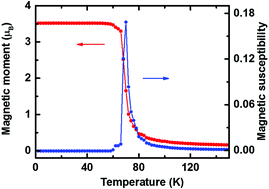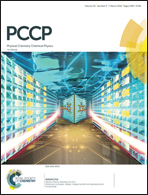Novel two-dimensional ferromagnetic semiconductors: Ga-based transition-metal trichalcogenide monolayers†
Abstract
Ga-based two-dimensional transition-metal trichalcogenides with tunable ferromagnetic semiconducting properties are explored by first-principles calculations. It is found that the CrGaTe3 monolayer is an intrinsic ferromagnetic semiconductor with an indirect bandgap of 0.3 eV and exhibits strong dynamical, thermal and mechanical stabilities in the free-standing form. Its Curie temperature of 71 K estimated by Monte Carlo simulations can be significantly enhanced up to near room-temperature (263 K) by 5% biaxial tensile strain at which its structure still remains dynamically stable, while compressive strain can turn the monolayer from a ferromagnetic semiconductor to an antiferromagnetic semiconductor and finally to a ferromagnetic metal with a Curie temperature of 473 K at −5% strain. It is revealed that the pronounced strain tunability originates from the competition between a variety of magnetic exchange interactions. The CrGaSe3 monolayer is found to exhibit similar intrinsic ferromagnetic semiconducting properties and strain tunability. The exceptional properties render Ga-based transition-metal trichalcogenides promising candidates for spintronic applications.



 Please wait while we load your content...
Please wait while we load your content...